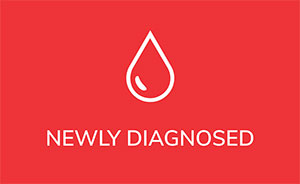
By Brian Koffman, MD
DISCLAIMER: This article only discusses the total white blood cell count as it relate to CLL. It does not attempt to explain the other helpful and sometimes critical information found in the CBC (complete blood count) related to the red blood cell data, the specifics of the granulocyte (a type of white cell) counts and the platelet counts.
I was asked what seems as if it should be a simple question: What can one tell about our cancer load in CLL (chronic lymphocytic leukemia) from the common and dirt-cheap white blood cell count (WBC) test?
The answer however is not simple.
The short response is that it depends.
First, when we examine the CBC (complete blood count), we need to focus on the differential (or diff as it’s called by doctors).
But more than that, we should look for the ALC (absolute lymphocyte count), not the total WBC. Our cancer is a cancer of the lymphocytes, so the number of lymphocytes is what is important to us in tracking the disease burden.
If there is no ALC, but only a percentage of lymphocytes, then we simply multiply the total WBC by the percent that are lymphocytes (i.e. if 25% of 10,000 WBC are lymphocytes, then the ALC is 2,500). This is usually done for us on the diff, but not always.
Again, the ALC is what matters most in CLL, not the percentage of the WBC.
Now let’s say a given CLL patient has an ALC of 100,000. While we can’t be certain exactly how many of the lymphocytes are the clonal CLL cells, [Since we usually have only about 1,000 to 3,000 total normal lymphocytes. The ALC is normally between approximately 1-3.], nearly all the time we can safely assume this patient has well over 95,000 clonal CLL cells per ml of blood. Whether it is 94,000 or 97,000 makes no clinical difference. It is close enough to monitor the progress or regression of the disease.
Say this same patient had the misfortune to have their ALC double to 200,000. We can bet dollars to donuts, that the increase is nearly all due to the cancer’s growth in the blood stream. The normal lymphocytes have their glass ceiling of about 3, so the rest are the clonal cancer cells. There is really no need to do any fancier testing.
The higher the ALC, the more accurate the count of the CLL cells
The opposite is also true.
When the ALC is in the normal range or the near normal range, then we can’t really tell accurately how many cells are normal and how many are CLL. But we can make a smart guess.
Obviously if our ALC is 2,000 then the highest your CLL count can be is also 2,000. We can’t have more cancerous lymphocytes than we have total combination of lymphocytes that are both cancerous and normal.
If we assume that our other counts (T cells are usually the bulk of the “normal lymphocytes) are normal, then we can estimate that the CLL cells are most likely less than 1/3 of the ALC. For example, my last ALC was 1.9 and my flow cytometry (an expensive test that is used to study blood cells and provides information about surface markers on the cells, a cell’s fingerprint) showed 595 CLL cells. That means that about 1305 of my lymphocytes were T cells and normal B cells
That said, when my ALC was 1, my flow cytometry at one time showed only 6 CLL cells, so you can see how this method is fraught with problems.
In the rare circumstance where we only have a WBC and no ALC or percentage of lymphocytes, it is even more inaccurate to estimate at low levels. However, at high counts, say 100,000 again, we can just subtract the approximate 10,000 that we know is the maximum count of a normal WBC. We therefore can assume that the other 90,000 or so of the 100,000 total cells are the CLL cells. That is a good enough estimate.
By the way, the normal WBC in a healthy patient is made up mostly of granulocytes and not lymphocytes.
Finally, if we were sick with inflammation or an infection, then we would expect that a higher percentage of the WBC would be made up of more noncancerous cells. The glass ceiling can be broken not just by cancer, but also by infections, inflammation and even certain drugs, such as steroids. But even in severe infections, we almost never see a WBC over 30,000 and the count is often in the teens. The ALC tends to rise even less in response to such noncancerous stresses.
So in summary, if the count, (ALC or even WBC) is quite high, we can make a pretty good estimate of the number of CLL cells. If it’s normal or low, we can put a cap on it, but it is really hard to follow any trend when the counts are near normal.
And the trend is our friend – It is usually best not to make decisions based on one data point. Follow the trend.
Dr. Brian Koffman, a well-known doctor, educator and clinical professor turned patient has dedicated himself to teaching and helping the CLL community since his diagnosis in 2005. He serves as the unpaid medical director of the CLL Society Inc.
Originally published in The CLL Tribune Q1 2017.

















